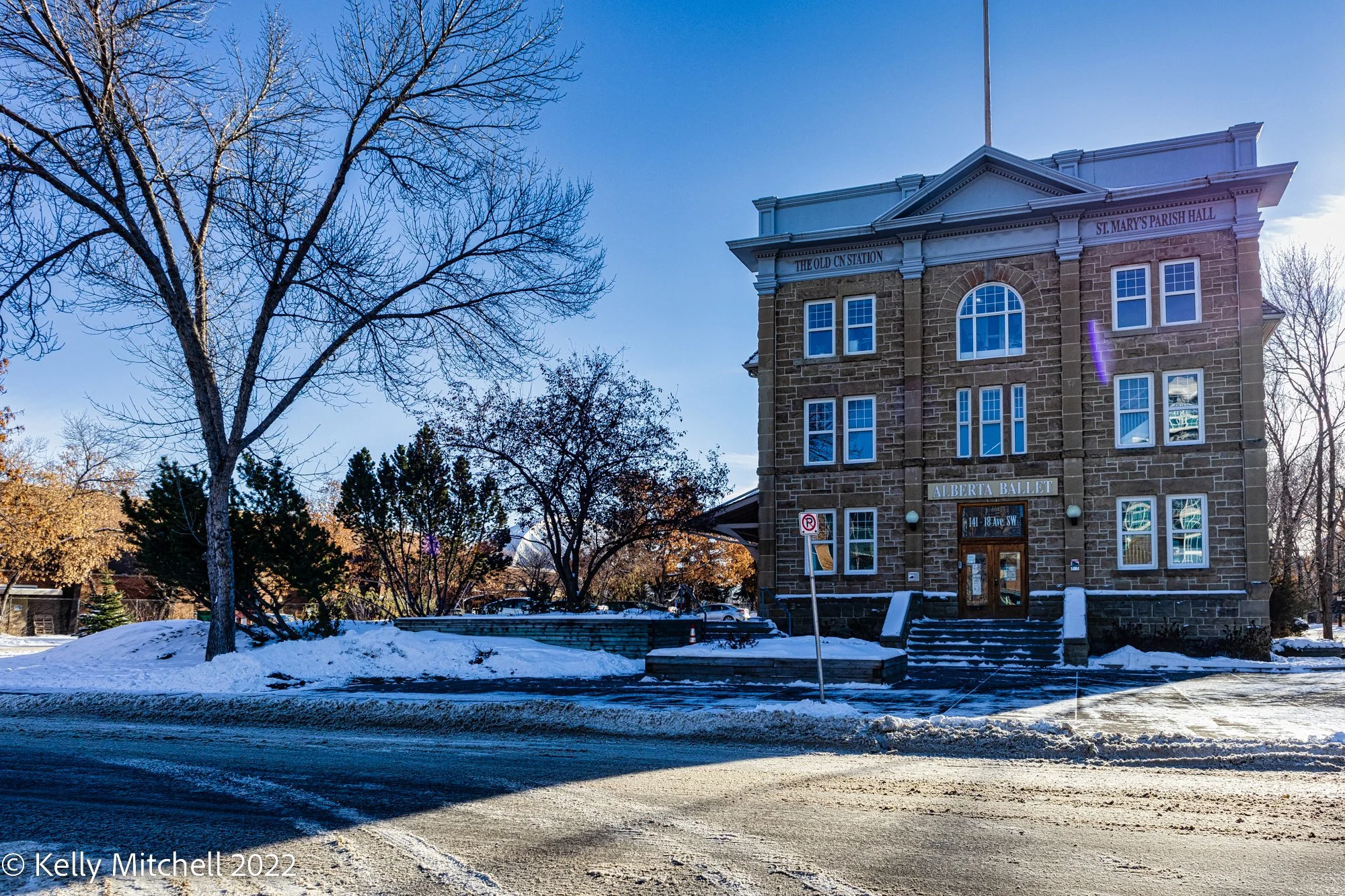ROULEAUVILLE SQUARE
RAILROAD CONNECTION
Aided by the CPR's well-advertised immigration and settlement programs, and by the Canadian Northern Railway (CNoR) opening of branch lines to create markets in rural areas, the years just prior to WWI saw unprecedented growth in the West. Railway construction was big business, but by 1911, when CNoR bought St. Mary's Hall for its Calgary depot, debt servicing and rumours of war in Europe began to slow the economy, CNoR, later incorporated into the Canadian National Railway, cancelled plans to build a new terminus and the old parish hall continued to be Calgary's "other" station for 60 years.
ST.MARY’S PARISH HALL (CNR STATION)
In 1905 St. Mary's Parish Hall. a buildinG made of local quarried sandstone, was built to accommodate the needs of a growing congregation. The French-speaking Mission District was created by the Oblate fathers in 1887, as a Roman Catholic settlement. This is where the first Roman Catholic Cathedral, schools and convent were built. The Parish Hall was a community focal point used for recitals concerts, plays, societies and clubs.
The three storey building, with its striking classical inspired facade, was sold to the CNR in 1911. The Hall was adapted for use as a train station and the first train arrived in 1913. By 1971 the railway had vacated the buildinG and it was acquired by The City in 1978
1985 saw much of the original roof, dormers and interior destroyed by fire. Later that year, the Calgary City Ballet society rallied to raise the funds to restore the Hall and became home to what eventually became the Alberta Ballet.
Plaque Placed by The Calgary Heritage Authority 2005
